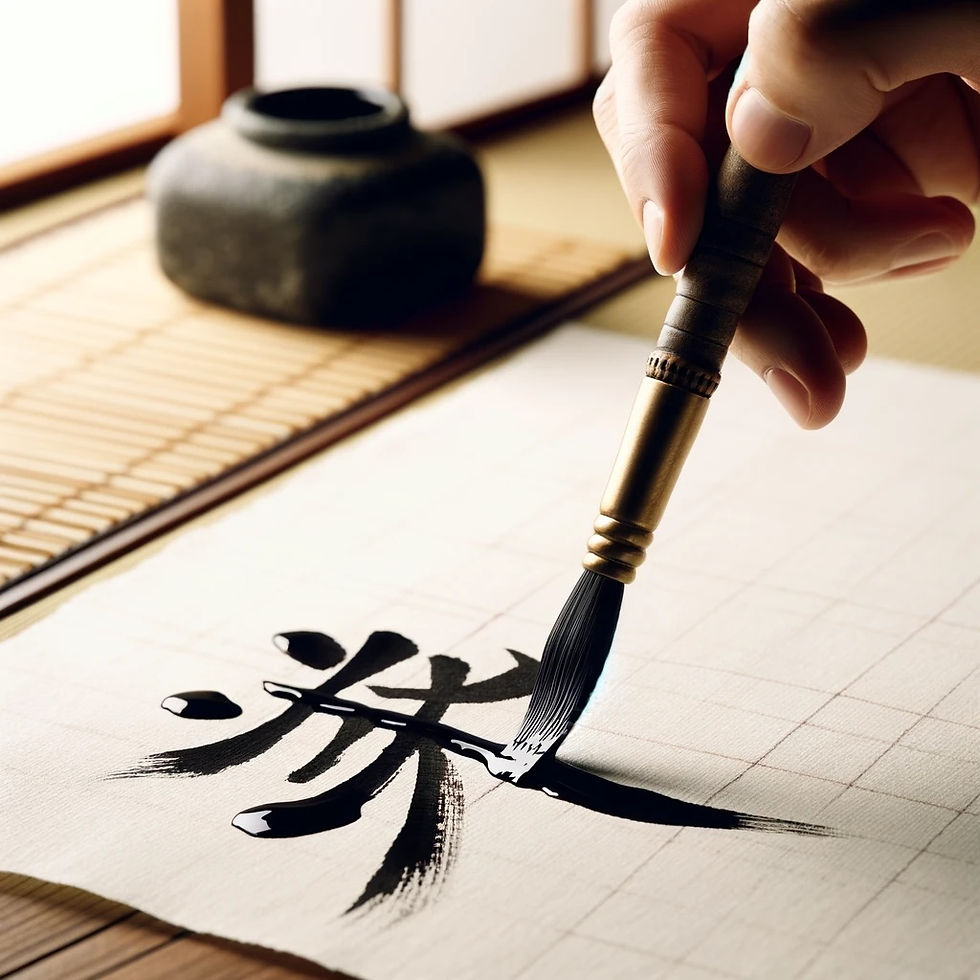
Kanji, the logographic characters used in the Japanese writing system, have a fascinating structure and history. Understanding the different Kanji Formation Methods can make learning them much more accessible and engaging. Let's explore the four main types of kanji: pictographic formation, indicative formation, phonetic-semantic composite formation, and semantic composite formation.
1. Pictographic Formation (象形文字, Shōkei Moji)
Pictographic kanji are the simplest and oldest form. They are visual representations of objects, designed to resemble what they depict. This method is one of the most recognizable Kanji Formation Methods. For example:
山 (yama): This kanji means "mountain" and looks like three peaks.
木 (ki): Meaning "tree," this kanji resembles the branching structure of a tree.
川 (kawa): This kanji for "river" mimics the flow of a river.
These kanji are straightforward, making them relatively easy to remember because their shapes correspond directly to their meanings.
2. Indicative Formation (指事文字, Shiji Moji)
Indicative kanji represent abstract concepts or ideas. They are often more symbolic and can be less intuitive than pictographic kanji. This method of creating characters adds depth to Kanji Formation Methods. Examples include:
上 (ue): Meaning "up" or "above," this kanji shows a line above a reference point.
下 (shita): Meaning "down" or "below," it depicts a line below a reference point.
本 (hon): This kanji means "origin" or "book." It represents the root of a tree, indicating the beginning or source.
Understanding the symbolism in indicative kanji enhances the learner's appreciation of this Kanji Formation Method.
3. Phonetic-Semantic Composite Formation (形声文字, Keisei Moji)
Phonetic-semantic composite kanji combine a meaning element (radical) with a phonetic element, providing clues to both pronunciation and meaning. This is the most prevalent among all Kanji Formation Methods. For instance:
案 (an): The kanji for "plan" or "proposal" combines the roof radical 安 (suggesting peace and stability) with 木 (tree), indicating its connection to wooden writing tablets used for recording ideas. The 安 component provides the pronunciation "an."
時 (toki): This kanji for "time" combines the sun radical 日 (suggesting a connection to time or days) with 寺 (tera), indicating the pronunciation.
By recognising the radicals and phonetic components, learners can often infer both the meaning and pronunciation of new kanji, making this Kanji Formation Method particularly practical.
4. Semantic Composite Formation (会意文字, Kaii Moji)
Semantic composite kanji merge two or more elements to create a new meaning. These kanji are logical combinations of existing symbols, offering another layer to the richness of Kanji Formation Methods. Examples include:
休 (kyū): This kanji means "rest" and combines 人 (person) and 木 (tree), suggesting a person resting by a tree.
明 (mei): Meaning "bright," this kanji combines 日 (sun) and 月 (moon), representing brightness.
Understanding these combinations makes this Kanji Formation Method an engaging and memorable way to study kanji.
How Knowing Kanji Formation Methods Facilitates Learning
Familiarity with Kanji Formation Methods can significantly enhance a learner's ability to master kanji. Here's how:
Enhanced Memorization: Recognizing kanji's visual and logical connections helps memorize their shapes and meanings.
Improved Guessing Ability: Familiarity with radicals and phonetic components allows learners to make educated guesses about the meanings and pronunciations of unfamiliar kanji.
Greater Engagement: Knowing the historical and structural aspects of kanji can make the learning process more interesting and engaging.
To me, understanding Kanji Formation Methods has made a lot of difference. Schools tend not to spend much time teaching students "strategic thinking"; rather, they rely on the individual's ability to memorize kanji—an extremely time-consuming method. This knowledge of Kanji Formation Methods will support your learning very effectively.
Thank you for reading,
Marco














Comments